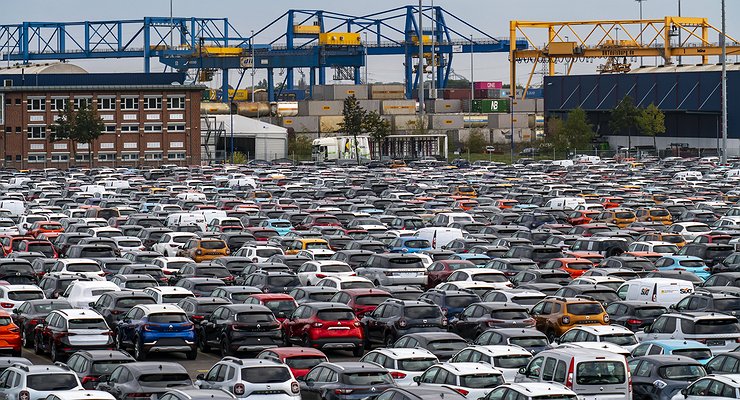
The Constitutional Court resolved the contradictions between two articles of the Code of Administrative Violations, which divide the responsibility for breaking traffic rules between the company that owns the car and the hired driver who drives the vehicle. Portal “AvtoVzglyad” got acquainted with the decision of the Supreme Court.
The Oktyabrsky Court of Yekaterinburg appealed to the Constitutional Court. A case was filed there to challenge a fine for breaking traffic rules. A car belonging to a legal entity, driven by a hired driver, drove through the intersection at a red traffic light. The fine for this violation was imposed on the owner of the vehicle, that is, on the company. However, her lawyers recalled the existence of Part 2 of Article 2.6.1 of the Code of Administrative Violations. Accordingly, the owner of the vehicle is exempt from administrative liability if the vehicle was in the possession or use of another person at the time the offense was established. Based on this, the company asked the court to “rewrite” the fine for the driver who committed the violation.
The Court of First Instance asked the Constitutional Court for clarification: who should pay the fine in such a situation? The Constitutional Court, after considering the case, ruled that the driving of a car by a driver on the basis of an employment contract with the owner does not in itself testify to the transfer of ownership of the vehicle to a civilian driver. That is why the employer must be held liable for all risks of adverse consequences of not properly guiding his employee. The use of a car by an employee is therefore identical to the use of a vehicle by the employer himself. Consequently, the fine for violating the traffic rules by a hired driver was rightly imposed not on the employee, but on the company that owns the car.
The Oktyabrsky Court of Yekaterinburg appealed to the Constitutional Court. A case was filed there to challenge a fine for breaking traffic rules. A car belonging to a legal entity, driven by a hired driver, drove through the intersection at a red traffic light. The fine for this violation was imposed on the owner of the vehicle, that is, on the company. However, her lawyers recalled the existence of Part 2 of Article 2.6.1 of the Code of Administrative Violations. Accordingly, the owner of the vehicle is exempt from administrative liability if the vehicle was in the possession or use of another person at the time the offense was established. Based on this, the company asked the court to “rewrite” the fine for the driver who committed the violation.
The Court of First Instance asked the Constitutional Court for clarification: who should pay the fine in such a situation? The Constitutional Court, after considering the case, ruled that the driving of a car by a driver on the basis of an employment contract with the owner does not in itself testify to the transfer of ownership of the vehicle to a civilian driver. That is why the employer must be held liable for all risks of adverse consequences of not properly guiding his employee. The use of a car by an employee is therefore identical to the use of a vehicle by the employer himself. Consequently, the fine for violating the traffic rules by a hired driver was rightly imposed not on the employee, but on the company that owns the car.
Source: Avto Vzglyad
Donald Salinas is an experienced automobile journalist and writer for Div Bracket. He brings his readers the latest news and developments from the world of automobiles, offering a unique and knowledgeable perspective on the latest trends and innovations in the automotive industry.














